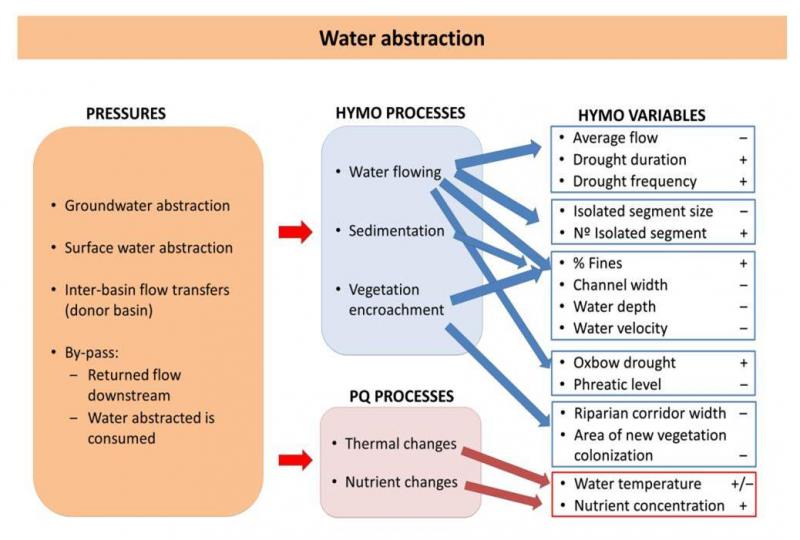For centuries, rivers have been altered bymeans of changing their morphology and their natural flow regime for human profit. This is what we have called hydromorphological (HYMO) pressures, which are the most commonly occurring pressures in European rivers. Theyhave damaged fluvial habitats and have had severe and significant impacts on the status of aquatic ecosystems.
D1.2 is a bibliographic review concerning the effects of HYMO pressures on fluvial hydromorphological processes and variables resulting from both degradation and restoration. We identified the most significant HYMO pressures, as well as relevant hydromorphological effects of the different pressure types on fluvial systems across spatial and temporal scales. We focused particularly on the HYMO pressures that have a significant impact on aquatic biological quality elements.
This review further serves as a tool to improve the general understanding of the mechanisms that control degradation-restoration processes. This tool is based on conceptual schemes developed for each of the HYMO pressures. The schemes show the interactions between the main processes affected and the resulting quantified changes of HYMO variables. They can be used to assess the possible impacts on a fluvial ecosystem caused by different HYMO pressures and to identify more effective restoration measures and their monitoring programmes.

Conceptual scheme showing the effects of water abstraction on HYMO processes and variables and their ecological impacts. HYMO refers to hydromorphological and PQ refers to Physico-chemical. Figure: Garcia de Jalón.
Further Links
Link to D1.2 on the REFORM website: http://www.reformrivers.eu/deliverables/d1-2
Author
Diego Garcia de Jalón, Universidad Politécnica de Madrid
